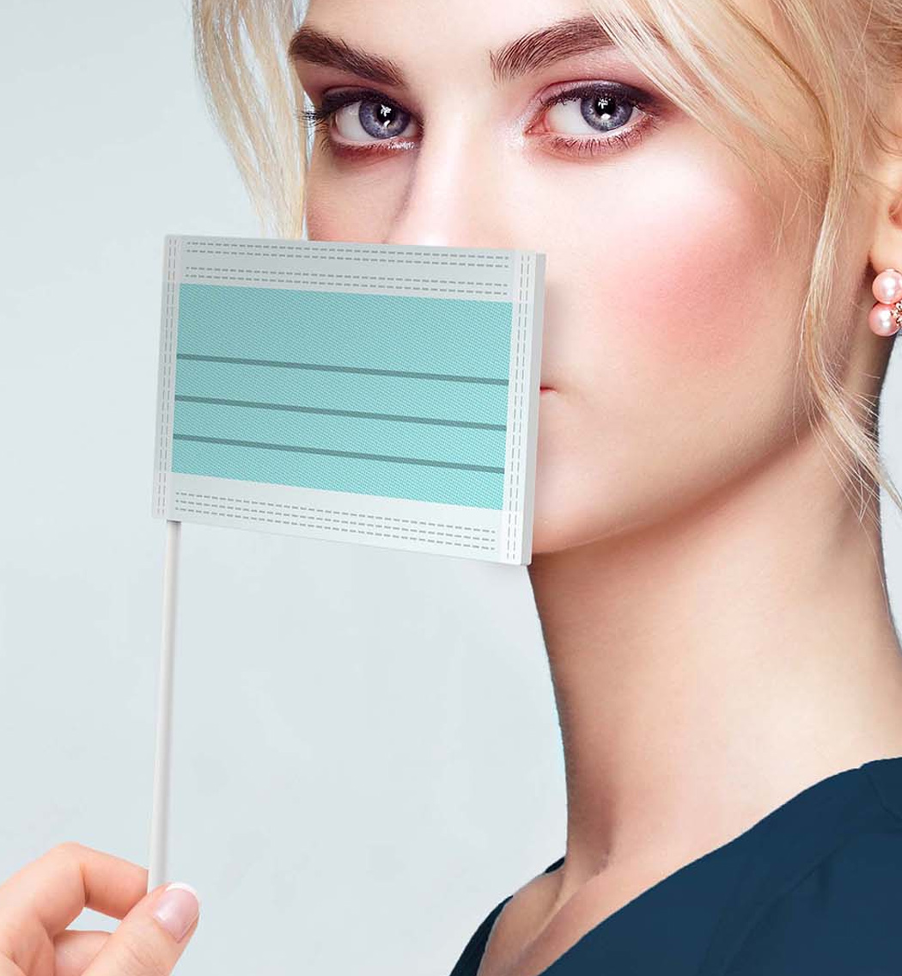How are Designers Reimagining Personal Protection for the Pandemic?
As the world slowly begins to re-open from the coronavirus lockdown, designers are finding new and innovative ways to re-design personal protective equipment (PPE). Face masks are becoming an essential part of our daily fashion, and outside of customization of the fabric choices, designers are envisioning what sort of social and technological issues that these accessories can confront.
Micrashell by Production Club © Production Club 2019
As a resident of Berlin, it has been hard to watch how badly the clubbing and nightlife scene has been hit by the coronavirus pandemic. Clubs are intimate spaces that can allow for the high rate of transmission of viruses and other infections. Thus, the Production Club has designed Micrashell specifically to satisfy the needs of nightlife, live events, and the entertainment industry.
The Micrashell suit includes an air-tight top suit and a hybrid soft and hard helmet made of cut-resistant fabric that aims to be highly durable and easy to disinfect. Unique to the suit’s design is the supply system component that allows for the easy administration of drinks and other substances through its drink and vape ports. Additionally, the suit comes with an internal speaker system with three modes where you can directly stream the set of either the DJ or live band, an emulation of the room’s sound based on psychoacoustics, and live feed of the room’s sound as received in the embedded microphone.
CoV19 (Ongoing) by Yi Fei Chen ©Yi Fei Chen
Unlike the Production Club’s party-ready suit of tomorrow, designer Yi Fei Chen has created an entirely different mask that aims to question Western cultural issues surrounding the act of wearing a mask and how it relates to notions of identity. Chen’s on-going work “CoV19” presents us with a transparent face shield that was designed in consideration of the differences in the cultural acceptance of face masks between eastern and western countries. Chen who was born and raised in Taiwan, but is now resides in Europe, became hyper aware of the differences in the cultural perception of face masks between the two locations.
Chen noticed that particular cultural connotations related to identity, individuality, and sincerity were highly impacted by the use of a face mask in western countries. While in specifically Asian countries, there is a high cultural and social pressures to wear face masks, which had been normalised long before the coronavirus pandemic. Chen’s design of a clear face mask allows for the user to continue to interact with face-recognition technologies (such as unlocking a smartphone) and provide transparency to the face’s expressed emotions, while still providing a barrier to prevent the spread of any viral droplets that may escape from the mouth.
The Atmos by AŌ Air 2019 © AŌ Air
Originally created in response to the rising global concern for air pollution, this New Zealand and American design company has adapted their focus for a new sense of purpose in light of the global pandemic. AŌ Air ‘s The Atmos has created a patent-pending no seal face mask that claims to be 50x better than market leading sports air filtration masks. The mask has also been designed to allow for the user’s face to be recognizable through its clear interface without fogging up glasses. It can also be worn and used safely over facial hair and can be recharged for up to 5+ hours of protection.
While this mask is still in commercial development, pre-orders have been already sold-out and it has already made its fashion debut as featured in Fall/Winter 2019 Seoul Fashion Week.
Socialite by Thierry Didot Studio © Thierry Didot Studio
Thierry Didot Studio’s “Socialite” looks more closely at the aesthetic features of the face mask to imagine a potential reality where the medical face mask is used in a masquerade. The work examines how our increasing familiarity with medical personal protective equipment may impact cultural aesthetic notions and in what ways this aesthetic will be included in other aspects of society. More importantly the design of the face mask presents a very relevant critique on the response of the global elite to the coronavirus pandemic, and the playful nature of the design calls into the question how different social groups around the world have found themselves to be disproportionately impacted by the pandemic.
Ken by f u l d e n d e © f u l d e n d e
While Shanghai-based designer Fulden Dehneli also tackles the concept of a transparent face mask in their work Gado, they present another accompanying PPE design for our future fashion. “Ken” re-imagines hand sanitizer as a part of our attire that can be worn like a necklace or bracelet. Named the Japanese word for sword, Dehneli designed “Ken” as an accessory that can be deployed to actively fight back against viruses like a sword. The design also features the Nike logo as an inspirational placeholder for branding.
As people once again return to public space, our sense of normality and our behaviors must adapt to effectively curb the long-term impacts of the coronavirus pandemic. PPE’s newfound place in our lives will continue to evolve as it becomes increasingly accepted in cultures around the world, and designers will continue to redesign these products so that the world will not have to return to any type of lockdown in the near future.





